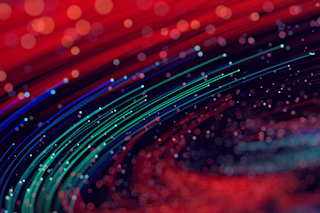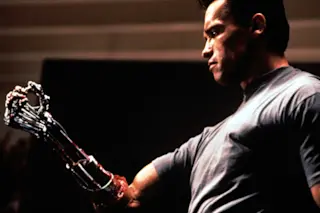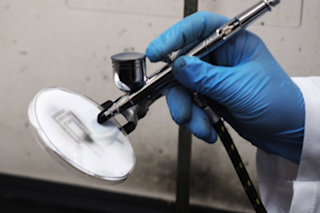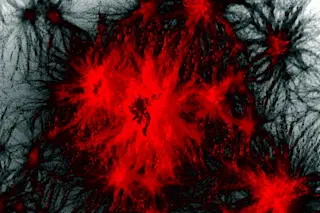
Researchers have invented a new tool in the fight against antibiotic-resistant "superbugs" that are becoming a growing health threat worldwide: a nanoscale device that shows instantly whether new drugs can kill the bacteria. The device uses tiny springboards coated in bacteria proteins, which are then exposed to an antibiotic; if the drug effectively binds to the proteins, the springboard bends.
[D]rug resistant superbugs are becoming more common and increasingly causing problems outside of hospitals. So [lead researcher Rachel] McKendry and colleagues want to find speedier ways to screen new potential antibiotics. They say their new nanoscale device can help, revealing in minutes whether an antibiotic is potent enough to kill bacteria [New Scientist].
Typically, researchers test new antibiotics by growing a bacterial culture and then applying the antibiotics, but it can take days for the cultures to grow. The new nanotech device, described in Nature Nanotechnology [subscription required], is made of an array of tiny silicon slivers that jut out like diving boards from a stiff surface. In the study, researchers coated the slivers with proteins from either a conventional or a drug-resistant strain of Enterococci bacteria, and then exposed the device to antibiotics. Only the springboards coated with proteins from the conventional bacteria bent.
The research team say this is because the antibiotic works by binding tightly to the proteins in a bacteria's cell wall and putting strain on them until the cell wall breaks. It acts on cantilevers coated in the non-resistant protein in the same way, causing tension in the protein layer that pulls the structure underneath out of shape. The antibiotic-resistant protein has a subtly different structure that the drug finds 1000 times more difficult to bind to. That means the cantilever, and by extension the bacterial cells, remain unaffected by the drug [New Scientist].
Cell biologist Jeff Errington
said the technology was very interesting and obviously highly sensitive. But he said it did not solve the problem of finding new antibiotics to test in the first place. "The bottleneck is in finding new molecules that kill bacteria by novel pathways," he said [BBC News].
Related Content: 80beats: Non-Lethal Antibiotics Could Fight "Superbugs" 80beats: Whoops! Anti-Bacterial Wipes Can Spread DiseaseImage: Rachel McKendry, et al.













